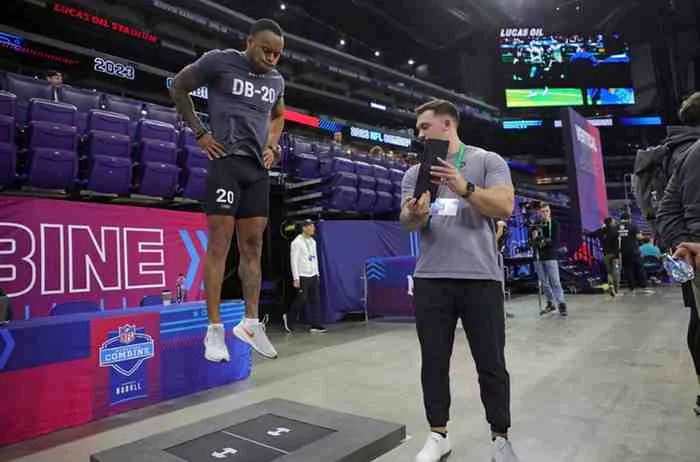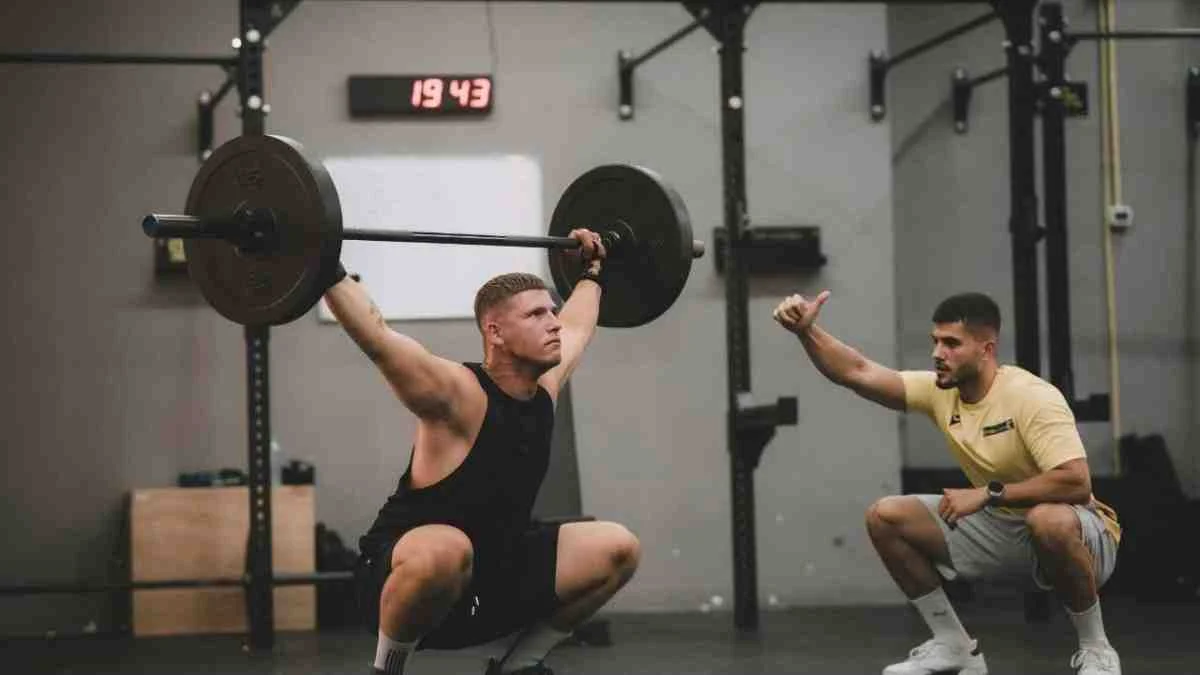By Joseph Potts & Cassius Sendish
In many sports, speed is among the most coveted qualities an athlete can possess. Relative to speed, the start is always the slowest portion of a race, with the first 0-10 yards of a 40-yard dash normally ~33% of total sprint time.
We performed an experiment with athletes who had hundreds of training hours performing various resisted sprint methods, with the goal of investigating what kind of impact six weeks of assisted sprint training (commonly called “overspeed”) would have on a well-trained athlete’s sprint-start ability. The prevailing theory is that the body would adapt in a highly specific manner in order to meet the demands of chronic exposure to such a highly specific stimulus (Franklin Henry’s SAID principle).
I suspected we would see some minor improvement in the athletes’ sprint-start abilities, but I think we were all shocked at the level of improvement that was evident after the midway and post-intervention testing. I originally thought a 5% betterment would be phenomenal.
I think we were all shocked at the level of improvement in the athletes’ sprint-start abilities that was evident after the midway and post-intervention testing. Share on XI hope the results seen here lead practitioners to consider both the role that the CNS plays in an athlete’s ability to actually harness their power and strength in on-field scenarios and the effect that kinetic loads can play on both ends of the speed-strength spectrum, and everywhere in between.
Our Materials and Methods
The subjects who participated were former collegiate football players (now considered professional football prospects), with an average height of 70 inches, an average weight of 198 pounds, and an average age of 22.5 years.
Baseline testing and all measurements throughout the six weeks were performed with two Brower Timing System gates in order to mitigate the human element from timing. Athletes utilized a staggered two-point stance commonly seen during sprint activity. The lead foot was placed 18 inches from the first laser. This distance was chosen because it allowed the athlete to raise their arms and assume a running posture without prematurely triggering the laser timing system.
Videos 1 & 2. Pro football prospects at TopSpeed Strength and Conditioning performing overspeed sprint starts and decelerations in training protocol.
For the application of assisted sprinting speeds, we used a 1080 Sprint unit. Athletes wore a waist harness and were assisted through the 0-5-yard zone by 12-15 kilos of tension. Assistance was raised or lowered as necessary for the athlete to achieve ~15% higher speed output than their baseline. This number was recalculated after midpoint testing, and future assistance was applied as necessary for the athlete to achieve ~10% more speed than their midpoint score. Volume remained constant throughout the six-week program as the athletes performed three sets of three reps once per week.
Objective Results
From a time perspective, the athlete’s ability to cover 0-5 yards out of a stationary position decreased from an average of 1.12 seconds at baseline, to 1.05 seconds at the midway point, and finally to 1.01 seconds at the final retest. This represents a percent change of 9.8%.
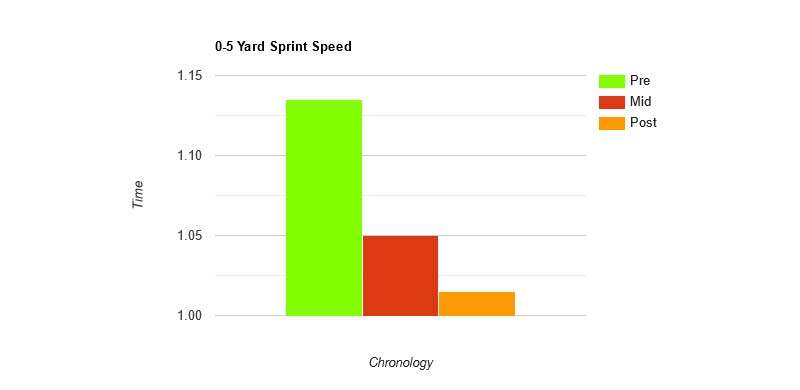
In miles per hour, the results indicated that the athletes went from an average of 9.19 mph during baseline testing, to 9.76 mph at the midway point, and finally to 10.08 mph at the final retest, representing a percent change of 9.7%.
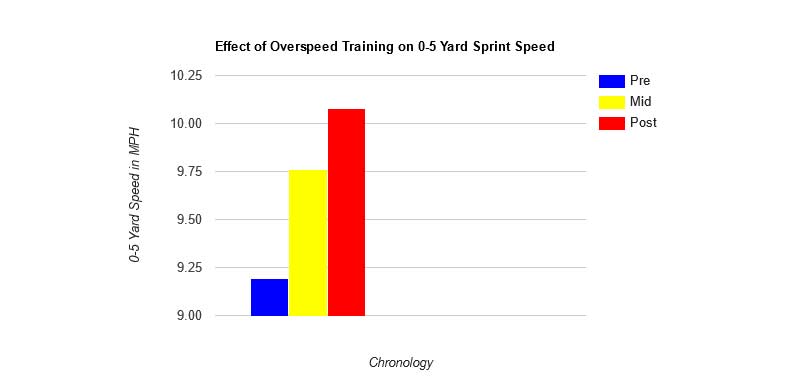
Discussion Points
The results of this pilot program should warrant further research on the subject matter. Future studies could:
- Use larger cohorts to investigate whether the improvements seen with the application of overspeed methods are primarily neuromuscular or physiological in nature.
- Track how long the effects last after the cessation of chronic exposure.
- Assess what changes occur with various ranges of time and exposure.
- Measure the effect differing levels of intensity have on the various stages of sprinting.
Regardless, it appears that adding the overspeed training element seemed to have a profound effect on a highly trained athlete’s ability to move faster than they were previously capable of out of a stationary position.
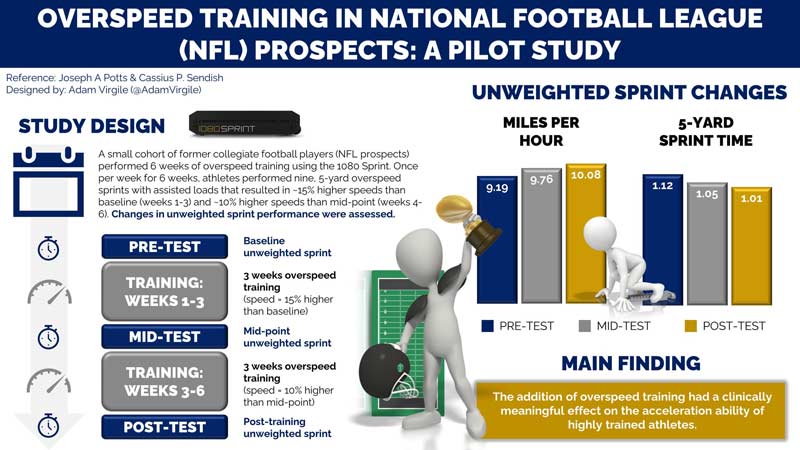
Given that each athlete included in these results had 5+ years of post-high school level resistance training, these results should be cause for consideration among sports performance coaches regarding the application of overspeed methods with highly trained athletes under their care.
These results should be cause for consideration among sports performance coaches regarding the application of overspeed methods with highly trained athletes under their care. Share on XHowever, these methods do not come without a substantial risk of injury. For example, in one instance among the athletes in this study, the plant foot slipped during deceleration while the athlete was still under pull-stress from the 1080 Sprint unit. Fortunately, there was no injury in this case, but it did illustrate the heightened risk of hyperextension or worse that could occur during a similar event.
Maximizing Acceleration Ability in Well-Trained Athletes
Due to the apparent high transfer to the betterment of the athlete’s ability to accelerate into a sprint, the use of overspeed training methods may be appropriate for well-trained athletes who have found their acceleration capacity to have plateaued while using traditional resisted sprinting methods.
While weightlifting and resisted speed training methods may be the appropriate approach for high school athletes and collegiate underclassmen (age range 14-19), strength and conditioning professionals may want to seriously consider the integration of overspeed methods for maximizing acceleration ability in athletes with a higher (20+) training age.
Since you’re here…
…we have a small favor to ask. More people are reading SimpliFaster than ever, and each week we bring you compelling content from coaches, sport scientists, and physiotherapists who are devoted to building better athletes. Please take a moment to share the articles on social media, engage the authors with questions and comments below, and link to articles when appropriate if you have a blog or participate on forums of related topics. — SF
 Cassius Sendish is the Assistant Director of Sports Performance and Combine Coordinator at TopSpeed. He returned to TopSpeed in a coaching capacity, earning his performance specialist certification with EXOS, after spending the previous three years coaching football at the University of Kansas.
Cassius Sendish is the Assistant Director of Sports Performance and Combine Coordinator at TopSpeed. He returned to TopSpeed in a coaching capacity, earning his performance specialist certification with EXOS, after spending the previous three years coaching football at the University of Kansas.
Coach Sendish graduated from the University of Kansas in 2015, earning two degrees while playing football. A two year letterwinner for the Jayhawks, he started all 24 games in his career and served as team captain en route to earning All Big-12 and Academic All-Big 12 honors in 2014. After his stellar collegiate career he spent time with the Cleveland Browns and the Calgary Stampeders of the CFL.





